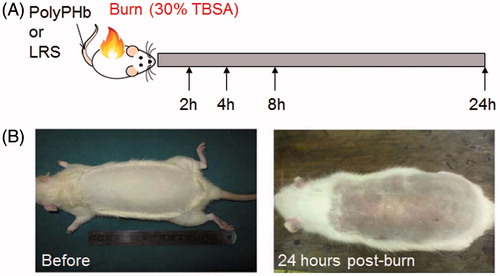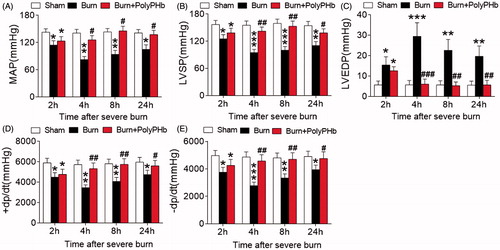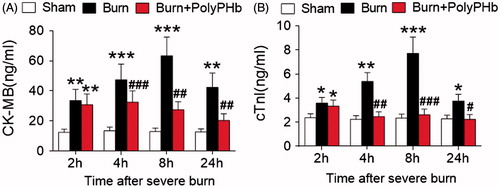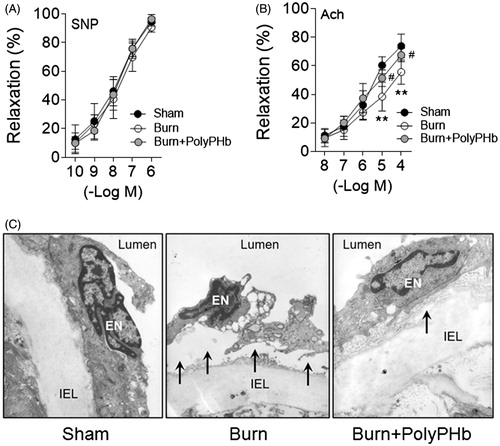Figures & data
Figure 1. A schematic representation of the experimental protocol (A) and representative images of the rat exposed to 100 °C water before and 24 h post-burn (B).

Figure 2. PolyPHb attenuated cardiac dysfunction after severe burn. The MAP (A), LVSP (B), LVEDP (C) and ± dp/dt (D and E) of the three groups after severe burn. Values were presented as mean ± SD (n = 15–20 per group). *p < .05, **p < .01, ***p < .001 vs. the Sham group; #p < .05, ##p < .01, ###p < .001 vs. the Burn group. MAP: mean arterial pressure; LVSP: left ventricular systolic pressure; LVEDP: left ventricular end-diastolic pressure;±dp/dt: maximum left ventricular developed pressure increase and decrease rate.

Figure 3. PolyPHb limited cardiac enzyme release after severe burn. The release of CK-MB (A) and cTnI (B) of the three groups after severe burn. Values were expressed as mean ± SD (n = 15–20 per group). *p < .05, **p < .01, ***p < .001 vs. the Sham group; #p < .05, ##p < .01, ###p < .001 vs. the Burn group. CK-MB: creatine kinase-MB; cTnI: cardiac troponin-I.

Figure 4. PolyPHb ameliorated endothelial damage caused by severe burn. (A) The SNP-induced endothelium-independent relaxation and Ach-induced endothelium-dependent relaxation of aorta. Values are presented as mean ± SD (n = 5 per group). **p < .01 vs. the Sham group; #p < .05 vs. the Burn group. (B) Representative transmission electron microscopy images of the ultrastructure of the aortic endothelium (n = 3). (C) Original magnification ×10,000. Black arrows indicate endothelial cell lifting and separation from the IEL. SNP: sodium nitroprusside; Ach: acetylcholine; IEL indicates internal elastic lamina.

